
Children grow up with unique sets of challenges in today’s world. They have to keep up with a growing amount of pressure in the midst of a highly volatile environment. Dr. Christine M. Silverstein saw the need to help children, teens, and young adults grow and become resilient. She is a peak performance coach, behavioral health RN, and clinical hypnosis expert. In this episode, she sits down with Juliet Clark to discuss her upcoming book, Wrestling Through Adversity, where she sheds light on the challenges young people face, especially in terms of their mental health. Drawing from her extensive experience working with athletes, Christine shares the techniques that can help in transforming anxiety into productive energy. Join her in this conversation and see the value of instilling resilience among our young people.
—
Watch the episode here
Listen to the podcast here
Wrestling With Adversity
Christine, welcome to the show. I’m excited to talk about your new book.
Thank you. It’s nice to be here.
Wrestling Through Adversity is a book that you’ve been building up to. Can you tell us how did you decide that this was the book you needed to write?
It has to do with the circumstances around the world that were influencing me in the beginning. I had an idea some years ago to write a book, but I didn’t have the energy or the focus to say, “I’ll actually do it,” until I saw these news reports of what’s happening to children around the world, like in war in Ukraine. Also, the children in the classroom and how they’re fearful to go to school because they might be blown up during their history lesson. Also, feeling for the parents who have to deal with going to these schools and identifying their children by their sneakers because that’s the only thing left remaining of their child. That touched me.
As I continued to watch the progress of reports about children and the high anxiety rates, depression, and suicide, I began to notice that there were many reports in the newspaper about things like children as young as two waiting in emergency rooms for psychiatric care and having suicidal ideation all the way to teenagers who are having challenges. Sometimes there are no facilities for them for months. They linger in no man’s land in the emergency room.
Also as I continued to listen, I realized that there’s another group that’s neglected, and they are the young adults. That’s been true forever because we expect our children in this society to grow up at 17. They’re still children, but on their eighteenth birthday, they become adults. Automatically, we expect them to act like adults and to know what to do. The reality is their brains aren’t fully developed until they’re about 25 years old. You can’t expect them in one day to leap into adulthood and to know what to do. Those are the groups of people I work with. I have worked with children, teens, and young adults for many years. I’m particularly concerned about their welfare.
I know that the techniques I use in my programs are useful for children as young as three years old to bring through their lifetimes. I decided to write this book to show people that there’s something they can do to help their children grow. Also, there is something in it for them as parents and healthcare professionals, coaches, or anybody who wants to read this book because it has information about what you can do to help yourself grow and be resilient.
You and I have talked there are about two generations that are not one bit resilient. You’re also a peak performance coach. Let’s talk a little bit about that because the name of the book is Wrestling Through Adversity. It truly is because you’ve worked in the wrestling world.
I do work with wrestlers. I have a program called Winning Ways for Wrestlers that I developed many years ago. That was one of my first programs. That’s because my son was a wrestler at the age of seven all the way up through college. I know the problems and challenges he had with performance as many wrestlers do. When my children became teenagers and they were involved in sports and I have four children, I noticed that they were having challenges after watching them in practice and they were fine. They’d go out onto the wrestling mat, the balance beam, or run track, and their performances lacked luster, you might say. I decided I was going to learn what to do.
I had experiences in my life where I used self-hypnosis and also mindfulness and meditation when I had a series of miscarriages and wanted to have a baby. I was only given one option, and that was to take a toxic drug so that I could maintain the pregnancy. That was my only hope the doctor said. He gave me this prescription for DES, which is Diethylstilbestrol which, at the time, was known to cause cancer in the mother but also cancer in the offspring. I didn’t want to take that medication for anything. I decided I was going to develop my own self-help program. I did that. I learned these new techniques. I got in the fertility zone, and I helped myself to have these healthy babies.
I had that background and I knew that this approach needed to be holistic in mind, body, spirit, and emotion to be effective. I couldn’t find anybody who would help my children with their performances. It’s either you don’t have a problem or you have to go to therapy for it. There’s nothing in between. I studied peak performance coaching and became a clinical hypnosis specialist. Also, I used my surgical nursing background to work with my clients particularly athletes to help them through injury, recover, win, and feel good about themselves.
I know we’ve had discussions about how tough it is these days. There’s so much pressure on these kids. Back when you and I were athletic, you went and you tried out for your high school team. I know from my kids that you weren’t getting on those teams unless you had been part of club teams. In the case of my daughter a soccer player, she was on a premier team. There is so much pressure all the time, plus keeping up their grades, plus all of what’s going on in the world. There’s a lot of pressure on kids these days, social media too.
It comes from different directions. I read that 60% of college students admit to having mental disorders when they enter college. The rates of depression, anxiety, and suicide were high before the pandemic, but it’s been exacerbated since COVID-19. There are studies about all these challenges that colleges have and what they should do about them. It comes down to caring about people, caring about the students, and having programs that they can relate to, and, for college athletes, to have the time even to go to performance sessions or to learn how to use the power of their minds and then transform that into what they need to do when they graduate into their professions.
Athletes, as you know, because you are an elite college swimmer, you have great skills. You have to prepare yourself mentally, and physically, they have your plan of action when you swim, etc. All of those are great skills to carry forth in your life. If you get depressed and you’re anxious, you may end up like some college athletes committing suicide. That was a horror to me. That was the straw that broke the camel’s back for writing this book because I worked with high school students all the way up through college and even sometimes students who were nine years old.
They come back at various times in their lives to build up their skill level, mental rehearsal, and the mindful toughness skillsets that I teach. They say, “I’m not learning anything. Nobody’s teaching me hands-on tools.” They come back and say, “Now I’m graduating from college and I need to get my first job. Can you help me?” We work and they feel totally confident.
There is a statistic out there, to go back to how important this is, that most of the major female CEOs now for major corporations were elite athletes at one point. There’s a lot of discipline that happens. It is not only discipline, but resilience and overcoming obstacles.
If you don’t have the obstacles to overcome and make mistakes, you’ll never become resilient. The sports environment is ideal for them to learn what to do and to grow in resilience. It’s a waste of energy if you end up depressed, quitting at that point, or feeling so depressed you want to take your own life. That’s what we need to deal with and be aware of and have programs that teach conflict resolution and managing your stress along with these high-level athletic skills, which, in the past, they say you should be strong and relaxed. That doesn’t help. You need to have the same training you have for the skill of how to swim or how to wrestle. That’s not incorporated into their programs.
Let’s go back a little bit more to the teenage years because that’s when you begin to work with some of these athletes during wrestling. Tell us the story about how you got into this. Was it the Olympics?
There are many aspects to this. It was mostly when I decided that I was going to work with wrestlers. That was through the association with my son and the knowledge of it over the years since he was seven years old. I started off with going out to call different wrestling schools. They had private schools and offered my services. At first, I gave them for free and they were a little skeptical, mostly male coaches at that time. People were a little skeptical, but then I decided I was going to give this big presentation to a bunch of wrestling coaches. They accepted me. I developed a program and decided to have little diagrams I was going to call wrestling holistic by this holistic sport, which was foreign to these coaches.
I walked into the dinner they had the night before. They were all sitting there and I was the only female present. They said, “Are you a psychologist?” I said, “No, I’m a nurse.” He said, “We are not injured, how come you are here?” Right away, that’s at the stage for me. They knew about me through my son. They were calling me Mrs. Silverstein and using my son’s name. In the meantime, in their heads, they were thinking, “What is she going to tell us about teaching wrestling?” As it was, it was very fortunate that the Olympic champion, Kurt Angle, who had won the gold medal in the previous Olympics was the clinician there to teach the skills to the high school coaches. He was very gracious.
When the coaches weren’t listening to what I was saying, he said, “You better listen to her because I used this to win the gold medal.” That helped with my credibility. I went onto the mat and I was talking in the middle of my presentation. This was in a hotel, and they had a wrestling mat in a room in the hotel. The lights went out. My husband was recording, and I said, “What do I do?” I was teaching. They’re talking in the dark, and then you can hear there’s rattling in the kitchen next door. I got to that.
For all the principles I wanted to teach, I showed them diagrams that I drew by hand about the Highway To Success and the Humpty Dumpty syndrome. I explained all of these things to them. It was beginning to make sense. Nobody wanted to wrestle with Kurt Angle because of his large muscles. He had legs like big mature oak trees. His thighs were very thick. These middle-aged wrestling coaches didn’t want to wrestle with him, but they threw somebody out from the audience, like the gladiator in the roaming coliseum. He started to wrestle him.
I got to the visualization and this saying, “This isn’t going to work, this hypnosis, I don’t do this.” I gradually brought them into the scene at the ocean in the water. They were floating and all the imagery that I used, and then I brought them onto the wrestling mat to support what they were doing in the clinic. After they opened their eyes, they said, “That was great. I didn’t know how easy it would be to take down Kurt Angle.” The same person who they threw out did it in his imagination. It was so easy. That was the success. The coaches understood the holistic nature of their sport. I consider that something that I look at in the past and say, “How did I even do that?” At the same time, they were open. That’s how they learned. Since then, I’ve worked with many teams, coaches, athletes, and wrestlers with rec programs all the way up through college and international wrestlers as well.
You talk in the book about anxiety that’s going on with the kids. Can you talk a little bit about that? You and I have had discussions about a certain generation of dating and complaints about, “I can’t find someone who’s not medicated.”
That’s right. Children are started on drugs as early as two years old. They’re too active. They have childhood depression. I don’t think that any child should be on drugs at a very young age, particularly without any behavioral modification. They can take it temporarily because they’re having some challenges with anxiety, but they should learn new skills so they can become resilient. These are very simple things to do. The idea is that they’re on medication and they might be on it for years. That’s a fact.
Some clients I work with who are in their 30s now, they can barely stand. They’ve been on these medications since early childhood. They have challenges with diabetes. They can’t move around without holding onto furniture. I attribute that to all the medications and the challenges you have with coming off those medications after being on them for so many years. The best thing you could do is to learn how to overcome this anxiety, which is a waste of energy, and transform that into something productive.
The best thing you could do is to learn how to transform this anxiety, which just is a waste of energy, into something productive. Share on XThat’s how I work with athletes. It’s not wasted energy, it’s the energy you can use. I use imagery and also this recycle funnel. It’s green. I have it in my office. I show them how to take a deep breath and breathe out through that toward their opponents. They can feel that energy and therefore they’re using it to score rather than just to leak it all over the wrestling mat or the baseball field.
All athletes, even speakers, I’ve spoken a ton of places and I still get that 30 seconds of nervousness right before, and then it clicks in. As athletes get that a lot too, it doesn’t go away that you’re not nervous before a race or a match.
You take it and you transform it into something positive. That’s always the possibility. Otherwise, as I said, it’s wasted energy. It takes as much energy to be anxious as it would be to score. Why not use it successfully?
I love that. I’m going to remember that next time I go speak someplace. The other thing that we see a lot of drugs is ADHD. There are a ton of kids on drugs for that. Kids were kids, especially boys. They ran around, they were rambunctious, and we just don’t want to see that anymore.
I have a chapter in my book dedicated to that asking, “Where did the ants in my pants go?” When I was a child, I was very active at a young age. I remember climbing up a telephone pole when I was three years old with my sister’s direction, putting on roller skates, and taking off down the street competition that we set up. Being very active, I always thought that was positive. I always thought that I could do a lot of things. I could scale a fence faster than the boys in the neighborhood, and I could run faster than they could.
I thought this was great, except when I was in grade school, my mother started to hear reports that I had ants in my pants and something was wrong with me. My mother questioned, “What’s wrong?” It began to affect me. They disregarded the fact that I was an A student, but continuously, I got in trouble for certain things.
When I was in the 8th grade, I was in a Catholic school. There were 50 students in each classroom. One day my teacher was absent, so another teacher from the other eighth grade came in to take care of 100 students. I was sitting in the first row, first seat, and I always had that habit. I was interested in playing basketball. I rolled up a piece of paper while she was talking or making it into a ball, and it was the trash can. I threw the paper into the trash can while she was speaking, and it popped off the top of the trash can and hit the nun’s habit.
While doing that, the teacher went into a rage. She was going down to the assembly and threw me down two flights of stairs on cement stairs without a railing and threw me against the blackboard in her classroom with all the students. I was the youngest student in the eighth grade, and I was very lightweight. She threw me around the classroom, and it was very traumatic for me. That’s without a diagnosis. In those days, there was no such thing. The nuns couldn’t diagnose you, even if there was.
At the same time, this continued. It was a fact that sometimes I would do so many things, and my mind would be jumping around way ahead of everybody else. I had to adjust. It happened all through high school and math class. Later on, in nursing school when I went there when I was sixteen and I had trouble keeping up with the other students. As a matter of fact, in nursing school, my second-hand watch was dropped, and I didn’t have money to buy a new one. I had to take the pulse of the patient taking my left hand with my watch so it would start, and then taking the pulse with my right hand. That was quite a challenge for me. It did help me to pace myself in my life.
I can identify with the children now who had this challenge. Also, to say I never considered it a disease. I never considered high energy as a problem. Neither did the other members of my family because we were all raised, but my parents valued this. At any rate, I learned to adapt. I grew from my mistakes. I accomplished a lot of things in my life as a result of transforming my anxiety and high energy into something productive. It was very interesting that when I was an adult, I went to a biofeedback expert. He helped me to understand that my high energy could produce wonderful things if I could just learn how to use it wisely. I took his word and that’s how I lived my life.

Wrestling Adversity: I accomplished a lot of things in my life as a result of transforming my anxiety and high energy into something productive.
I have ADHD as well, but my dad did some things that have helped me control, focus, and organize. We never went the drug route with it. Thank God.
That’s great that you channeled it into your sport.
Not just into sports, I have list-making, and I have ways that I’ve developed over the years that keep me on track and focused.
I understand. At the same time, you can hone your focus with the skills that I teach. That’s what it’s all about, especially with sports. You have to be right at the moment. You can’t allow the luxury of a negative thought or your focus to be off on the wrestling mat. If your mind is outfield on the baseball, you’re playing baseball rather than on the wrestling mat because you’re so out of it. That can be honed and you can focus like a laser beam on what you have to do to score. That helps you throughout your life. Those are transferable. I call them portable skills that you can use in every area of your life as young as nursery school, all the way up to being in a nursing home. There’s no limit to the usefulness of energy, especially in a nursing home where energy is very low.
There's no limit to the usefulness of energy. Share on XChristine’s book, Wrestling Through Adversity, will be out on September 19th, 2023. It is in presale. If you’re a parent, a teacher, or a coach, this is a book for you. I really encourage you to go over, check it out, and see what tips and tricks you can get to help you deal with your children on a better basis. Christine, thank you so much. It was great having you on.
Thank you for having me. I wish you success now with your focus and high energy to accomplish your goals.
Thank you.
Important Links
About Dr. Christine M. Silverstein
 Dr. Christine M. Silverstein, peak performance coach, behavioral health RN, and clinical hypnosis expert at The Summit Center for Ideal Performance has assisted clients of all ages for 27 years to reach their best performances in health, athletics, academics, business, and performing arts. She specializes in working with children, teens, and young adults, using Mindful Toughness® skillsets, such as self-hypnosis, mental rehearsal, positive self-talk, and feedback loop analysis. As a researcher, historian, and best-selling author, she has presented her works on Hypno-Coaching and history in the US and globally to promote mental health.
Dr. Christine M. Silverstein, peak performance coach, behavioral health RN, and clinical hypnosis expert at The Summit Center for Ideal Performance has assisted clients of all ages for 27 years to reach their best performances in health, athletics, academics, business, and performing arts. She specializes in working with children, teens, and young adults, using Mindful Toughness® skillsets, such as self-hypnosis, mental rehearsal, positive self-talk, and feedback loop analysis. As a researcher, historian, and best-selling author, she has presented her works on Hypno-Coaching and history in the US and globally to promote mental health.
Love the show? Subscribe, rate, review, and share!

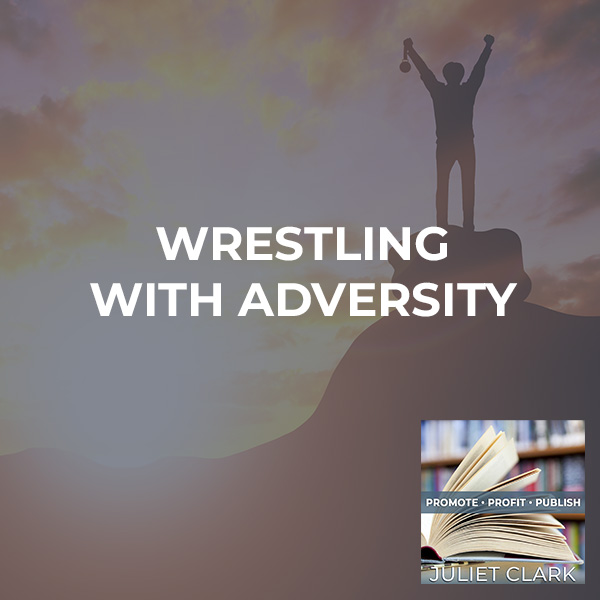
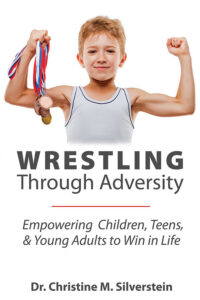


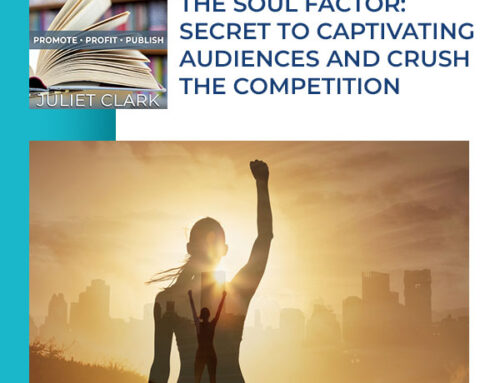
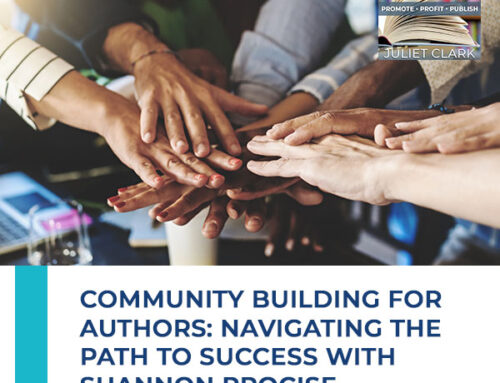
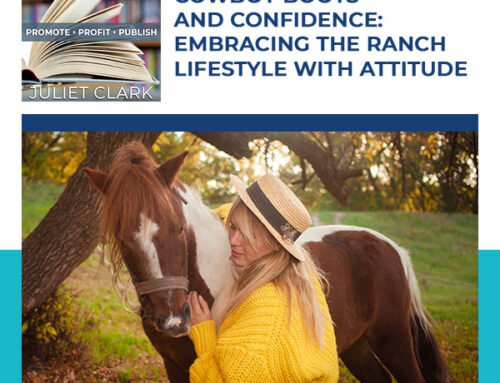


Leave A Comment